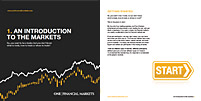

Is Forex Scalping a Viable Trading Strategy?
28th October 2015
Scalping, or short-term trading on the currency market, presents a list of pros and cons. In the end, any good trading strategy will undoubtedly shed light on the inherent risks of this shortest of trading options in Forex.

Ask any seasoned Forex trader and they’ll certainly have an opinion on scalping. Scalping is simply making lightning-quick trades on the currency market and hoping for the best. While some consider this the ultimate in strategies, the majority of traders understand that a more balanced approach is often safer and more lucrative in the long run. Let us first take a look at some of the generally accepted pros of scalping the market:
SCALPING
PROS –
- Scalping is a good choice for those who have a hard time patiently waiting for a trade to close. Positions are generally held for a very brief timeframe, and that allows for a lower chance of reversals to harm your trading position.
- Scalping is often employed as an early trading strategy for newcomers to the currency markets as it requires less overall knowledge of the market and of established trading philosophies. With the proliferation of training aids and educational materials on the market today, however, scalpers do have access to these strategic support pieces and don’t have to rely on scalping the market.
CONS –
- Scalping isn’t allowed on all trading platforms, and many brokers are adamantly against the trading practice.
- Unlike longer positions, one trading loss can completely unravel any gains made by several successful trades – and good trades often yield a 1:1 risk to reward or less.
- Accomplishing your financial goals – specifically, the amount of profit you want to make each day - is often much more difficult as the profits are simply smaller on each trade. A “5-pip” yield on a trade isn’t enough to call it a day.
- Long-term trend analysis of Forex traders has uncovered that scalping is simply less profitable than playing a longer position.
While the benefits and risks of scalping are certainly worth discussing, it is also critical to dive into the pros and cons of the other types of currency trades: intraday trades and swing trades.
INTRADAY TRADING
Intraday trading refers to holding a currency position for a period lasting from a few hours to a day. This is a common practice among Forex traders and can deliver consistent profits and less volatility than scalping. Many Forex traders conduct more than one trade in a day, and intraday trading has proven to be quite effective when combined with other currency trading strategies. The following are some of the pros and cons of this option:
PROS –
- An abundance of strategic options are available, like pivot points, Cornflower Blue, price action, or other currency trading philosophies.
- A trader using this approach can often hit 10-50 pips per day trade, accelerating the achievement of financial goals and frequently amassing 100 pips per day or more.
- This is a lower risk position than many others, as it requires a smaller capital outlay and a stop loss of less than 10 pips – sometimes less based on the strategy employed.
CONS –
- Scalp trades are faster to execute, and swing trades offer a larger margin for error – so you’ll have to pay attention to the dangers of reversals and whipsaws that can quickly destroy a stop loss.
- An intraday trader may not see any lucrative moves on a given day. These traders must abide by a strict code of rules and this can inhibit finding any good setups on a particular day of trading.
- Market volatility is often aimed squarely at intraday traders, as they are exposed for far longer than scalpers and don’t enjoy the long-term perspective favoured by swing traders.
SWING TRADING
PROS –
- Gains are generally big – often in the 75 – 250 pip range. This makes achieving medium-term financial goals much easier than the 5 pip returns on a scalp trade.
- Since trades are made less often and the scope of information is generally wider-reaching, indicators and signals on the charts deliver more relevant information.
- Swing trading doesn’t require a hair-trigger approach to investing, so it can free up time for the trader to get on with his/her life in other areas of interest.
CONS –
- Swing trading often disconnects the trader from the markets for an extended period of time. Whilst this is generally not too risky, major volatility in the markets or an unexpected world event can cause a serious loss of money.
- Swing traders often complete one trade per week or less, meaning that sticking to a profitable trading strategy is incredibly important. There simply aren’t enough trading opportunities to make up for too many mistakes.
Successful traders must ask themselves – what is the style that best matches my abilities, personality, and risk tolerance? Furthemore, what approach has historically delivered the best gains? In short, intraday trading and swing trading have proven to be the most effective ways to reap real profits on the currency market. Most reputable brokerage firms will support those involved in this type of trading, and work to migrate scalpers into this more profitable and secure facet of investing.
Begin trading today! Create an account by completing our form
Privacy Notice
At One Financial Markets we are committed to safeguarding your privacy.
Please see our Privacy Policy for details about what information is collected from you and why it is collected. We do not sell your information or use it other than as described in the Policy.
Please note that it is in our legitimate business interest to send you certain marketing emails from time to time. However, if you would prefer not to receive these you can opt-out by ticking the box below.
Alternatively, you can use the unsubscribe link at the bottom of the Demo account confirmation email or any subsequent emails we send.
By completing the form and downloading the platform you agree with the use of your personal information as detailed in the Policy.






